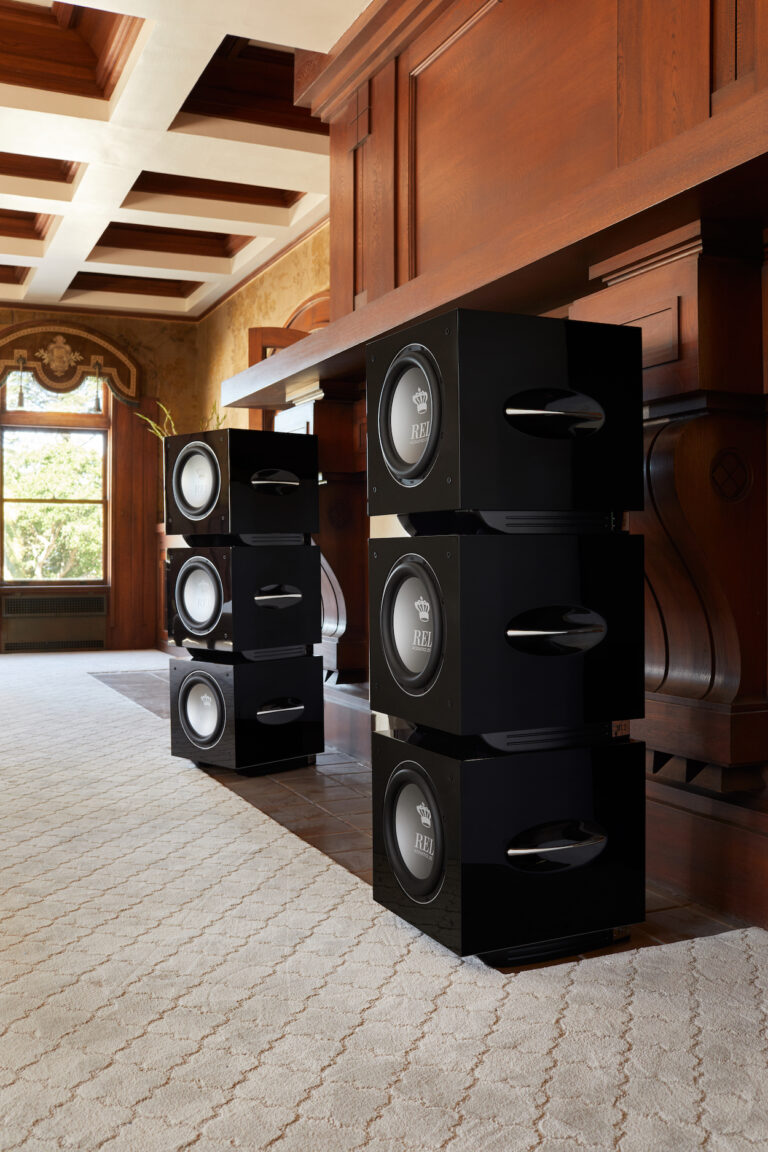The REL Acoustics S/812 Sub Bass Line Array
The Next Dimension in Bass
My relationship with subwoofers began in the late 70s while making my rounds at the Palmer House Hotel in Chicago, back then one of two summer Consumer Electronics Show high performance audio hotel sites. The other was the nearby Blackstone. The main show was at the giant McCormick Place Convention Center.
I walked into the Janis Audio display room, where owner/designer John Marovskis had set up a demo of his new Janis W1 subwoofer and Interphase crossover/amp. I anticipated that John would play music showcasing the subwoofer's contribution to the overall sound that focused on bottom-octave bass when he unexpectedly played a solo piano selection and skillfully used the subwoofer to enhance the sound. Even though the music selection did not have bass notes that specifically required a subwoofer, adding it made a noticeable difference, enhancing the piano's realism by more accurately reproducing its tonality and physical weight and adding a sense of space.
Thus, my journey with subwoofers began, and I quickly discovered that most were designed for cinema use, making them unsuitable for critical music listening. They often did more harm than good. I clung to my Janis setup until I encountered a pair of Vandersteen 2Wq subwoofers and added them to my 3A Signature speakers.
The Vandersteen combo provided 90% of the sound quality at 60% of the cost of the Vandersteen Model 5s I lusted for but could not afford—a very appealing value proposition that will rear its head again later in this review.
During the 2000s, Home Theater gained immense popularity, which led to the emergence of a large subwoofer market. At that time, we sold at my store a considerable number of Velodyne and JL Audio subwoofers. Nonetheless, I continued to use my 2Wq's.
I always struggled with the concept of adding a generic crossover, typically found in most powered subwoofers, to my high-end two-channel speaker system. My speaker system' crossover had been meticulously crafted with great care and precision to achieve the designer's intended sound, which was the sound I selected. To me, it didn't make sense to insert a crossover that impacts the sonic performance of my main speakers. When you adjust high and low pass filters to blend your main speakers with a powered sub, you essentially take on the role of a speaker designer. This task can be challenging for many people, and over the years, it has often resulted in poor outcomes that have given subwoofers a reputation for being "difficult."
I avoided using the subwoofer's crossover and let the main speaker system produce sound with the voice the designer intended. Then, I would "feather in" the bottom octave or two of bass to achieve full-range sound. Although this method also has its issues, it was my preferred approach.
Enter REL Acoustics around 2015
My first conversation with John Hunter, REL Acoustics President and Head of Acoustic and Physical Design, was to discuss the possibility of selling REL subwoofers at the company I was managing. With our focus on Home Automation and Home Theater, we were selling a lot of JL Audio. After an hour-long, in-depth conversation, we mutually concluded at the time that REL would not be a good fit for us. Our company had plans to expand into a two-channel audio division, and we both agreed that would be the time for us to revisit my request. However, in our first conversation, I was impressed by John's expertise and his emphasis on subwoofer usage for two-channel music reproduction. He described REL's approach of "augmenting" the bass of the main speaker system instead of replacing it, which aligned with my perspective. To that end, REL refers to their woofers as Sub Bass Systems, not subwoofers.
You Always Remember Your First
While visiting RMAF 2019 (Rocky Mountain Audio Fest), I learned about the AMG Viella Forte turntable then distributed by Musical Surroundings. I headed to the exhibit room where local Denver A/V dealer Soundings, was showcasing the turntable. I noticed in the room a pair of Vienna Acoustics Liszt speakers, accompanied by three REL subwoofers stacked on either side. It was my first introduction to a "REL Six Pack" configuration.
During one listening session, someone pulled out a rare edition of a Led Zeppelin album to play, and the subsequent listening experience remains etched vividly in my memory. What I heard from the REL six-pack that day was much more than what I was experiencing with my two subwoofers. As the music started, I was expecting to be overwhelmed by the six 12" subwoofers playing, and while the deep bass was predictably impressive, what floored me was the depth and size of the sound and the recreation of the recording space.
Vienna Acoustic Liszt floor-standing speakers are not large speakers. However, combined with the REL six-pack, I heard sound quality I would have expected from a multi-hundred-thousand-dollar system typically found in the downstairs ballrooms. There's that value proposition again.
Fast forward to the 2023 Florida Audio Expo, where Acora Acoustics showcased their reference VRC loudspeaker ($219K), declared the best sound in the show by virtually everyone who heard them. As I listened to the VRCs, my mind drifted back to the RMAF 2019 REL six-pack experience and I wondered what impact adding a REL six-pack to my Acora SRC-2s would have. While I had no illusion that it would turn my SRC-2s into VRCs, I wanted to experience how far up the ladder it would take me.
I touched base with John Hunter, who graciously agreed to send me a REL S/812 six-pack. Before I go further, let me tell you about it.
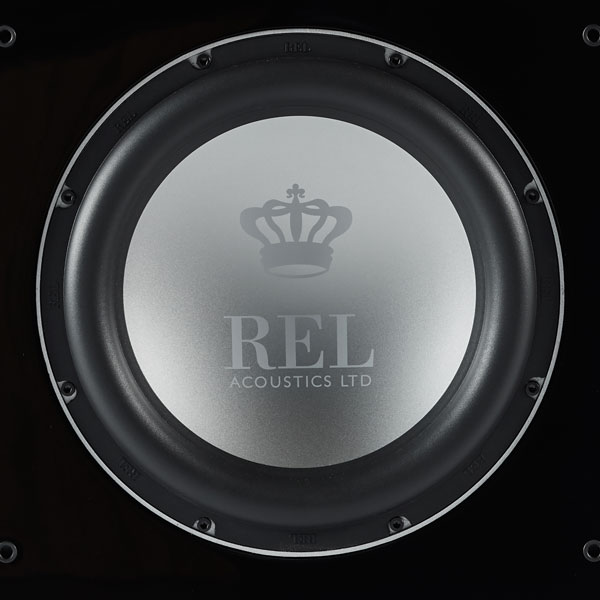 The REL S/812
The REL S/812
The S/812 resides at $3299.99 ($3499.00 on 2/1/24) and occupies the "sweet spot" in REL's subwoofer lineup that ranges from $499.00 to $10K each. It features a lightweight ContinuousCast™ 12-inch aluminum cone and a die-cast alloy driver basket. An aluminum cone driver can experience back wave distortion due to air movement behind it. REL strengthens and stiffens the cone's rear surface by adding a strategically placed, lightweight carbon fiber backing. This prevents the back wave from interfering with the main bass launch and by lowering bass distortion helps to improve overall sound quality.
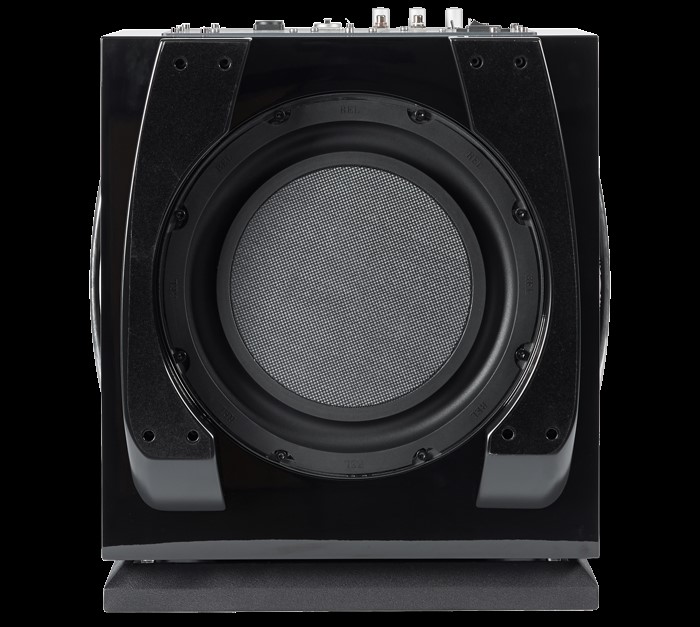 The S/812 also features a 12" down-firing carbon passive radiator employing REL's latest extreme long travel design, featuring a variable stiffness suspension. REL calls this its SuperProgressive™ radiator. The design's goal is for the the subwoofer to behave like a sealed box at low level but when there's demand, make it capable of delivering the 19Hz output of a 14" design.
The S/812 also features a 12" down-firing carbon passive radiator employing REL's latest extreme long travel design, featuring a variable stiffness suspension. REL calls this its SuperProgressive™ radiator. The design's goal is for the the subwoofer to behave like a sealed box at low level but when there's demand, make it capable of delivering the 19Hz output of a 14" design.
 The S/812's NextGen 5 amplifier boasts 800 watts continuous power output with 1000-watt peaks. Connection options to suit various set-up needs include Neutrik Speakon high level-input connectors, low-level RCA stereo inputs, and separate XLR and RCA LFE input connections. There's also a high-level Neutrik Speakon output that can "daisy chain" multiple subwoofers.
The S/812's NextGen 5 amplifier boasts 800 watts continuous power output with 1000-watt peaks. Connection options to suit various set-up needs include Neutrik Speakon high level-input connectors, low-level RCA stereo inputs, and separate XLR and RCA LFE input connections. There's also a high-level Neutrik Speakon output that can "daisy chain" multiple subwoofers.
REL highly recommends inputting high-level power amplifier speaker terminal outputs rather than low level preamp outs. The amp's output signal, REL claims, more closely resembles what's seen by your main speakers, providing the sub with the same sonic and electrical characteristics, including the amplifier's propagation delay. The result it a better blend and thus better integration between the subwoofer and main speakers, regardless of your power amplifier's design, be it tube, MOSFET or whatever. To make that connection REL provides a lengthy Neutrik Speakon—multi mini-spade terminated cable.
One of two toggle switches sets "Always On/Standby" and the other either "0" or "180" (degrees out of) Phase. Three variable knobs with but a single dot on each adjust level, LFE level, and crossover frequency. More helpful would be reference markings on the knob sides and level/crossover frequency gradation indications silkscreened onto the plate. REL's "count the clicks" adjustment methodology would be more convenient if the potentiometer clicks had a more definite feel.
REL's "secret sauce" is in their Perfect Filter design, said to extend the extreme low end bass frequencies, while simultaneously opening up air and delicacy in the middle and high frequencies. Specific information about the REL Perfect Filter is held close to the vest, but John Hunter provided the following when I asked him to explain the concept.
"As to the Perfect Filters, this is an all-analog circuit that lifts and extends output below 30Hz (Serie S) in order to deliver more "perfect" low bass. It extends and increases the delivery of deep bass without engendering the mechanical/robotic sonic signature and slight delay of DSP.
As with everything we do, these circuits are carefully evolved, shaped and listened to carefully in order to ensure that the positive aspects of producing rich, very extended deep bass are realized without audible degradation. The result is a filter that is responsible for greatly increasing the qualities of our Serie S and T/x models as well as our HT range of home theatre models. Each filter is developed and tuned for each specific model and they are a significant piece of the puzzle we had to solve in working to deliver a huge upgrade in sound from our previous models while keeping the cost increase reasonable and retaining our signature fast, natural sound."
A deeper dive into REL's Perfect Filter can be found in the following video.
REL offers an unparalleled collection of instructional videos about bass, subwoofer/speaker setup, and room tuning. Even if you don't own a REL sub bass system, it's worth investing your time on their website. Just click on the Articles tab to find the videos. I suspect you will learn something that will help you with your system.
The subwoofer, measuring 17 inches wide by 17.5 inches high and 20 inches deep and weighing in at 75 pounds is available in two colors: Piano Black lacquer and Gloss White. Both impressive-looking finishes use eight coats of lacquer. Chrome-finished handles make it easy to move the subs around. Also included is a well-constructed grill that, unlike many manufacturers' offerings, is obviously not an afterthought. Very stable rails replace the usual four feet and provide both more stable support and an attractive "floating over the floor" appearance.
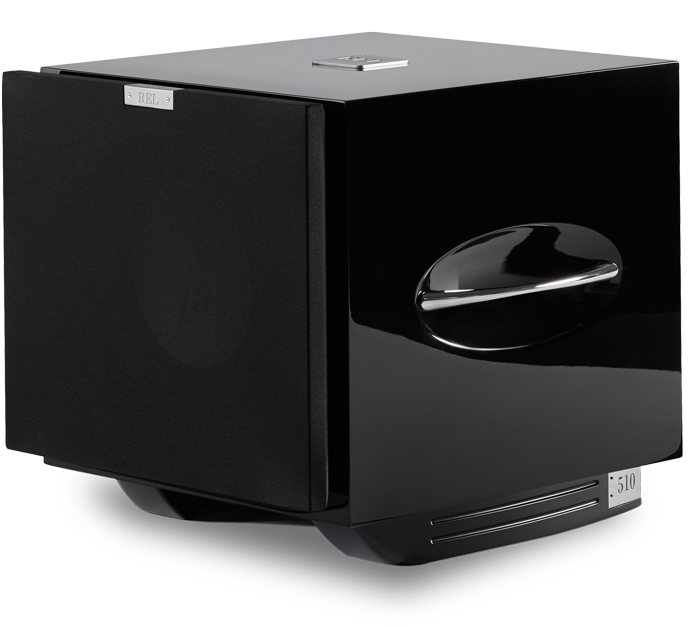 The Setup
The Setup
As luck would have it, Clay Parker, REL's Southeast Regional Manager and sub-bass system setup guru, lives about five hours from me and offered to shepherd me through the REL six-pack setup. Upon arrival of the palette holding the six cartons, I was instructed to unbox them, plug them into my AC power, and turn them on without setting/hooking them up. REL recommends letting the amplifiers charge overnight before set-up and calibration. The setup procedure that Clay walked me through was very similar to John Hunter's excellent video below. I could do no better explaining it.
If you don't have the time to watch John's explanation of the six-pack concept in the first five minutes of the video, it's essential to understand that it involves each layer of subwoofers doing a different task, and each subwoofer being individually adjustable to ensure optimal performance. The six-pack concept is NOT about six 12" subwoofers stacked atop one other all doing the same thing. I lived with a speaker system much like that for about three years. My Infinity IRS Beta loudspeakers had four 12" drivers in separate left/right columns all doing the same thing.
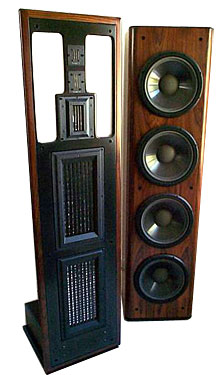 The REL sub-bass line array is a wholly different approach. Clay Parker explained it to me this way:
The REL sub-bass line array is a wholly different approach. Clay Parker explained it to me this way:
In the movie "Jurassic Park", when the T Rex stomps on the ground, the impact is felt in three different ways. The bottom subs convey the initial blow to the earth, the middle subs spread out the aftershocks, and the top subs help convey the size of the area by conveying low-frequency ambiance cues.
Translate that concept to a kick drum, upright bass, or organ in a cathedral, and you start to understand the contributions the REL stack makes to the fundamental note, the overtones, and the decay.
Let's Listen
After setting up and adjusting everything, I took some time to listen to music for a week or two before conducting a thorough evaluation. I wanted to ensure that my impressions weren't simply due to the large scale of this upgrade, rather that I could identify multiple areas where it made significant improvements.
My audition plan was to listen carefully to three different configurations to evaluate the impact the REL subs had on different music pieces. First, I would listen to the music only through my Acora SRC-2 speakers without subwoofers. Next, I would add the left and right bottom subs. Finally, I would listen to the music with all six subs playing.
 To commemorate the moment I first heard the Janis subwoofer I chose to make Jazz at Long Wharf my first critical listen. Recorded by Mark Levinson in 1977, it showcases a jazz trio's live performance at the Long Wharf Theater in New Haven, Connecticut. Levinson utilized minimal microphones to capture the sound of the piano, upright bass, and drums. It is a simple, well-recorded live session in a theater setting, similar to my many experiences attending Jazz Trios at the LSU School of Music. It opens with the trio, then breaks into solos, then back to the trio finale.
To commemorate the moment I first heard the Janis subwoofer I chose to make Jazz at Long Wharf my first critical listen. Recorded by Mark Levinson in 1977, it showcases a jazz trio's live performance at the Long Wharf Theater in New Haven, Connecticut. Levinson utilized minimal microphones to capture the sound of the piano, upright bass, and drums. It is a simple, well-recorded live session in a theater setting, similar to my many experiences attending Jazz Trios at the LSU School of Music. It opens with the trio, then breaks into solos, then back to the trio finale.
To provide an insightful review of my experience with the REL six-pack, I believe it would be more beneficial to share the raw comments from my written listening notes instead of a polished, wordy version. The experience of the REL six-pack is not just about its impact on any specific part of the frequency spectrum but more about the overall feeling it produces.
Here goes:
No Subwoofer
Has the feel of 70s "Japanese Jazz" that is technically exemplary but lacking in soul, Pace, Rhythm, and Timing ( PRaT)
Foot not moving
Drums feel more closely miked and "smaller."
It feels like a recording of the session offered up on a stereo
The recording was presented between the speakers with good depth.
Sounds like a very good stereo system playing a good recording.
Not much "magic"
Two Subs added
The piano tone improves and sounds more realistic regarding the space it occupies on stage. The drums set has a more profound attack and better dynamics in deep bass and rim shots.
I still feel the boundaries of the listening room.
Now, it sounds like artistic musicians playing with much better interplay and expression.
I still feel like I am listening to a recording, albeit a much better one spatially and dynamically.
Six Subs added
LIVE!
Now I feel like I am AT the recording session and have all the feel of sitting at the LSU music hall.
Listening room walls disappeared.
The Acoustic bass took control and is not buried in the music but stands out on its own and drives the music.
Dynamics are life-like, with outstanding rim shots and musician interplay.
Life-like!
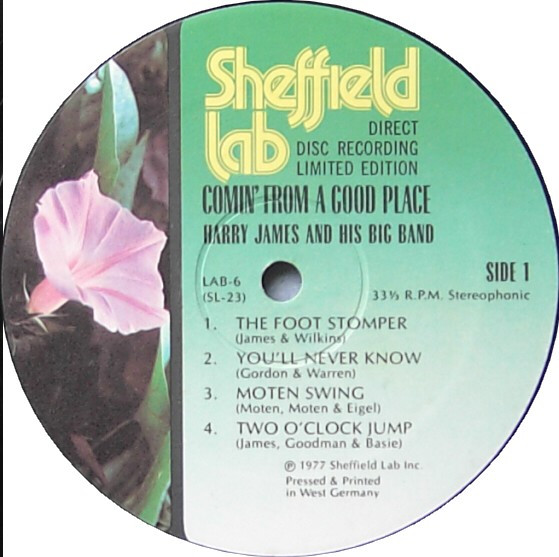
Let's take it up a notch and add more instruments with Harry James's The Foot Stomper from the Sheffield Labs Comin' From a Good Place album.
No Subwoofer
Overall smaller sound
Sound like musicians are just going through the motions, maybe the first take of the morning
For God's sake, get these guys some coffee!
The back left and right of the soundstage are truncated.
Z-Z-Z-Z-Z-Z
Two Subs added
The piano regained its position on the left side and increased in size and tone.
Considerable more depth, width, and space
The trombone tone is more life-like with richness and "blat."
Instruments starting to separate in location and timbre.
Six Subs added
Acoustic bass is now anchoring and driving the music.
Instrument interplay is illuminated... It sounds like we have seasoned musicians playing who know each other.
NOW we got SWING!
Trumpet dynamics are much more balanced and correct.
Toe tappin' PraT.
Big Band!
I intentionally highlighted these music selections to convey the positive attributes of the REL six-pack in areas other than their ability to move a lot of air. Adding the REL six-pack to my speakers significantly improved in both examples the sound quality and listening experience . The soundstage became broader and deeper, and the imaging had a more 3D quality with increased solidity of individual instruments. The bass notes were more defined, had a faster leading edge, with improved pitch definition and were well-integrated in time and space, resulting in an elevated music experience. The dynamics also increased, and the sensation that the music coming from different loudspeakers dissolved.
I was anticipating improved sound quality after installing the REL six-pack. However, I was impressed by its significant enhancement in recordings like these. The increased dynamic expression in all the instruments caught me off guard.
In 2005, Gary Koh of Genesis Advanced Loudspeakers was the first to expose me to the concept that bass overtones impact upper frequencies. He explained how it increases dynamics and can have a significant tonal effect on the treble. At the time, it seemed counterintuitive, but now it makes sense.
The REL stack added an openness and airiness to the synthesizer in Hans Zimmer's soundtrack from Interstellar. While two subwoofers easily reproduced the fundamental bass and moved a lot of air, as many subwoofers can, adding the REL six-pack to the Dreaming of the Crash cut was frankly stunning. The first two minutes are filled with sounds of wind and thunder, and I could almost feel the wind in my listening room. The thunder sounded realistically distant and rolled deeply through the room. The buildup that started at about 2:40 was mesmerizing, and by the end of the cut, I had been transported to a place that had a solitary, desolate feeling. Using just two of the REL subwoofers did not take me anywhere near that place.
Let's Move Some Air
You can't have six 12" woofers and over six thousand watts of power sitting in your room and not want to punch the accelerator.
I wanted to try Company by Hedegaard, one of the ceiling tile loosening songs Acora used to demo their VRC loudspeakers at FLAX 2023.
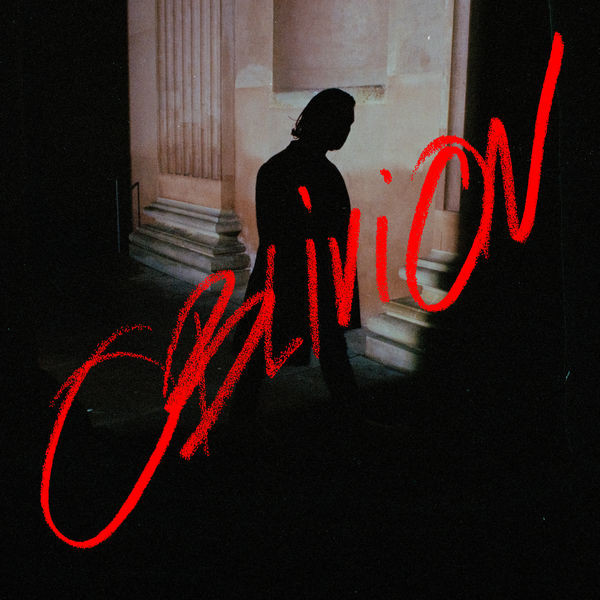 Using only my Acora SRC-2 speakers, I was very pleased with how well they handled the extremely low frequencies. Then I added the REL six-pack; the only listening note I wrote was "Stupid Good" with a smiley face. As expected, the sound filled the room; it rattled everything that was loose and, oddly, never sounded "loud."
Using only my Acora SRC-2 speakers, I was very pleased with how well they handled the extremely low frequencies. Then I added the REL six-pack; the only listening note I wrote was "Stupid Good" with a smiley face. As expected, the sound filled the room; it rattled everything that was loose and, oddly, never sounded "loud."
What impressed me even more was how closely it resembled my FLAX 2023 Acora VRC experience, which put a $mile on my face.
I conducted auditions of the three different configurations for two months and noticed that my notes were becoming repetitive. There was no question that the REL six-pack had a clear and overwhelmingly positive, consistent impact on my system.
Here is a summary of how the different configurations "stack up"
No Sub = Smaller soundstage, less instrument definition/separation, and interplay with less dynamic expression.
Two Subs = Larger "feel" to the music with more profound fundamental bass impact and larger soundstage dimensions. The bass ambiance is still missing, and the music still sounds like it is being "stuffed into your room."
Six-Pack = Life-like "feel" to the music with superb dynamic expression, instrument definition/separation, and interplay. Listening room boundaries disappear, and instruments within the soundstage take on a more realistic density. You are transported to the recording venue/session.
 Last Word(s…)
Last Word(s…)
While this section is titled "Last Words", I can summarize the impact the REL six-pack configuration had on my system in just one word: transformative.
When we discuss the stereo soundstage, we refer to it as a three-dimensional entity with width, height, and depth perspectives. We attempt to visualize the outlines of instruments with palpable breadth and focus within that space. However, the truth is that the soundstage is an illusion created by invisible musicians, and the sense of "reality" we desire is a product of our imagination. The REL six-pack helped move my mind closer to that sense of "reality."
As you move up most speaker manufacturers' product lines, you get better bass extension. Of course, there will also be improvements in the crossover, drivers, cabinet, etc., but you primarily pay for a more significant and impactful sound. However, sometimes, you may find the cost to climb a rung or two on your speaker manufacturer's ladder to be cost-prohibitive. For instance, in my case, the cost difference between my excellent SRC-2s and the VRCs is $171,000. Well out of my reach, much like when, in the '80s, I lusted after the Vandersteen 5a's.
But like the Vandersteen 3A Signature/ 2Wq subwoofer value I mentioned earlier in the review, the addition of 20k of REL subwoofers has allowed me to get 75% of the Acora VRC sound at 35% of the price—a value proposition I can consider.
Having sold thousands of pieces of equipment and personally auditioned hundreds, I am hard-pressed to think of an individual component that has had a more significant overall impact on moving me closer to my personal Audio Nirvana than the REL six-pack configuration. Admittedly, the look is an acquired taste. Still, if you are contemplating a speaker upgrade and have room to add them to your system, I would suggest arranging a demo.
But be careful… As John Hunter is fond of saying. "Once you hear a six-pack, it is hard to unhear it."
I would agree.
REL S/812 $3299.00 each ….. $3499.00 each as of 2/1/2024
Specifications
TYPE
Front-firing active driver, down-firing passive
ACTIVE DRIVER SIZE & MATERIAL
12 in. (300mm) long throw, Continuous CastAlloy™ cone structure, die-cast alloy chassis
PASSIVE RADIATOR SIZE & MATERIAL
12 in. (300mm), Carbon/Carbon flat cone structure, steel chassis
LOW-FREQUENCY EXTENSION
-6dB at 19 Hz
INPUT CONNECTORS
High-Level Neutrik Speakon, Low Level (2) RCA, (1) LFE RCA, (1) LFE XLR
OUTPUT CONNECTORS
High-Level Neutrik Speakon, (1) LFE RCA or (1) LFE XLR
POWER OUTPUT
800 watts (RMS)
AMPLIFIER TYPE
NextGen 5 Class D
WIRELESS CAPABILITY
REL AirShip II (sold separately)
Protection System
FULLY ELECTRONIC SET SAFE
Yes
D.C. FAULT
Yes
OUTPUT SHORT
Yes
MAINS INPUT VOLTAGE
220-240 volts, 110-120 volts for certain markets
FUSES
5 Amp 220 volts operation, 9 Amp 120 volts operation
Dimensions
W X H X D
17 x 17.5 x 20 in. (432 x 445 x 514 mm)
NET WEIGHT
75 lbs. (34 kg)
FINISH
Piano Black Lacquer, Gloss White Lacquer 8 coats
Supplied Accessories
MAINS LEAD
NEUTRIK SPEAKON
Yes (10 Meters Nominal)
INTERCONNECT
USERS MANUAL
Manufacturer Information
800 Addison St.
Berkeley, CA 94710
contactus@rel.net
(510) 990-6005


